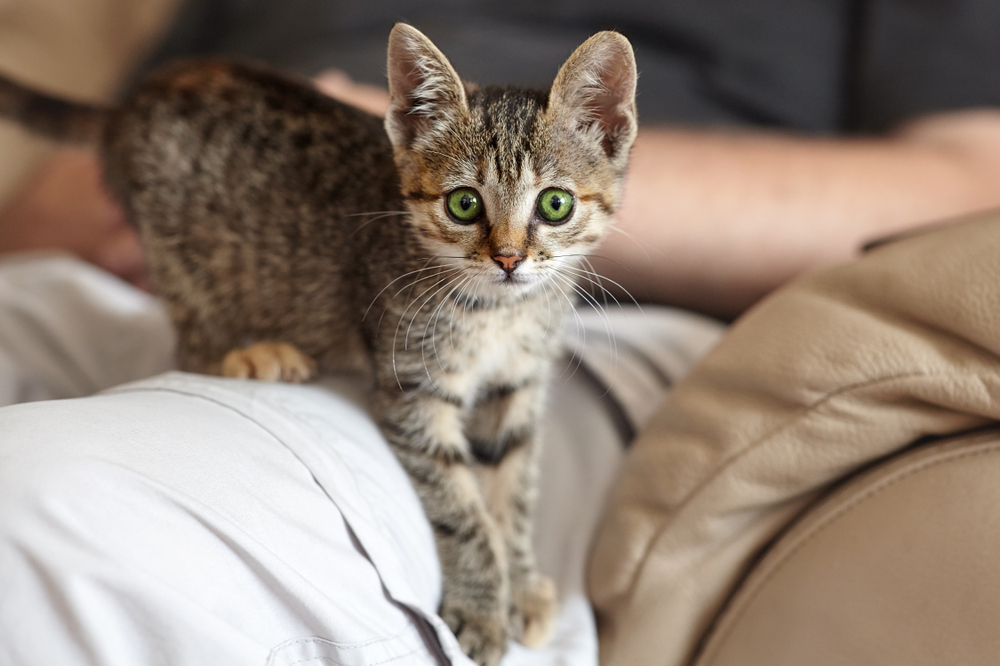Did you recently adopt or bring a new cat into the home? How exciting! There’s nothing like little meows from a fluffy kitty or the soft purr of a new feline friend. We are sure you are soaking up all the adorbs you can handle. But, if you are new to cat ownership, you may wonder how you can best take care of your kitty.
That’s where the team at Union Lake Pet Services comes in! Let’s explore the art of caring for a new kitten or cat with 7 simple cat care tips for beginners.
Cat Care Step 1: Setting Up
To begin, you will need to get all of your supplies for your pet. Basics include:
- Litter box, litter, and scoop
- Cat food and treats
- Water and food bowls
- Bed
- Cat post or tree
- Brush, nail clippers, and other grooming supplies
- Toothbrush and cat formulated toothpaste
- Toys (don’t forget the catnip!)
- Collar with identification tags
- Leash and harness (if you want to walk your pet)
- Various scratch pads
- Cat cubby or other places for hiding
- Carrier
There are loads of other cat products and fun things, so don’t limit yourself to just our list if you want to spoil your kitty. We know you do!
Cat Care Step 2: Cat Wellness Examination
The next step is to set your kitty up with a wellness appointment. Choose a low-stress cat carrier and use these tips for getting your cat to the vet.
This initial meeting with your veterinarian will determine a baseline of health for your cat. From there, we can start them on a vaccination and parasite prevention program. For young kittens, you may need to come back in a few weeks for booster shots.
Your veterinarian will recommend the right diet for your new little one, as well as instruct you on dental care and other things you can do at home. Some areas of concern are whether your pet has been spayed or neutered and if they’ve received their microchip. The best step you can take to reduce the chances of them getting lost is to microchip them and keep your contact information current on the registry. (Ask us about this.)
Cat Care Step 3: Cat-Proof Your Home
Consider your wee buddy like you would a toddler. This means examining everything in the home for potential problems.
- Secure all windows and doors, including fixing loose screens.
- Sweep floors and remove anything that might be appealing to your cat, but would be a no-no, such as small items that can be ingested.
- Make sure medications are kept in secure bottles and stowed in the medicine cabinet.
- Look at the list of plants that are toxic for cats and ensure none of them are in the home – especially lilies of any variety.
- Limit the use of noxious chemicals, including cleaning products and toilet bowl cleaners, and store them safely.
Cat Care Step 4: Feeding
Maintain your veterinarian-recommended diet and portion size for your feline. Choose a schedule for feeding your cat each day, and stick to this routine as much as possible.
Encourage your kitty to stay hydrated by changing the water bowls daily or using a water fountain type of bowl, since cats adore running water.
Treats are great but use them sparingly in lieu of plenty of attention and pets.
Cat Care Step 5: The Litterbox
Cats can be very particular about their litterboxes. You’ll want to be familiar with many of the most common litterbox challenges and how to address them. And get familiar with how to deal with cat pee accidents.
Cat Care Step 6: Enrichment and Exercise
Because cats spend most of their lives indoors, it is important to offer behavioral enrichment so that kitty doesn’t become bored. This includes:
- A cat tree or things to climb on
- Window perch (cats love to look out the window, and adding a bird feeder is a great idea)
- Toys, including those that require interaction from you, like a laser pointer, for added bonding time together
- Time spent brushing your cat
- If you want to get ambitious, catios, or outdoor spaces for cats, are awesome ways to give your pet some fresh air while keeping them safe.
Don’t assume your cat is getting enough exercise on their own. Obesity in cats is very common, and without those important interactive games you give your pet, they are susceptible to becoming overweight.
Also, don’t leave your cat alone too long.
Cat Care Step 7: Cat Behavior Problems
Your sweet, docile ball of fur may develop behavior issues, especially if you add another cat. If your cat runs at every visitor or loud noise, you may need help to socialize a shy cat. Or you may have the opposite problem and have a cat that is a bully. Your kitty may become stressed and need your help in getting calm. And multi-cat homes can have feeding issues.
We Are Your Partner for Complete Cat Care and Cat Wellness
If you recently added a cat to your home, we would love to meet them. Please schedule an appointment for their first wellness exam, or call for any questions you might have about excellent cat care. Enjoy your new fur friend!

